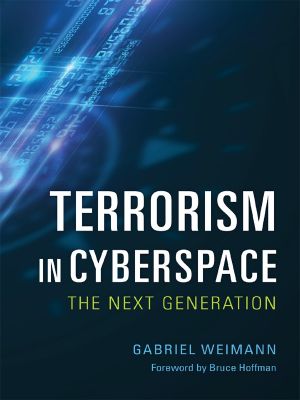Terrorism in Cyberspace

- Authors
- Weimann, Gabriel
- Publisher
- Woodrow Wilson Center Press / Columbia University Press
- Tags
- pol037000 , science , philosophy and social aspects , sci075000 , political science , political freedom & security , terrorism
- ISBN
- 9780231704496
- Date
- 2015-04-21T00:00:00+00:00
- Size
- 1.28 MB
- Lang
- en
The war on terrorism has not been won, Gabriel Weimann argues in Terrorism in Cyberspace, the successor to his seminal Terror on the Internet. Even though al-Qaeda's leadership has been largely destroyed and its organization disrupted, terrorist attacks take 12,000 lives annually worldwide, and jihadist terrorist ideology continues to spread. How? Largely by going online and adopting a new method of organization. Terrorist structures, traditionally consisting of loose-net cells, divisions, and subgroups, are ideally suited for flourishing on the Internet through websites, e-mail, chat rooms, e-groups, forums, virtual message boards, YouTube, Google Earth, and other outlets. Terrorist websites, including social media platforms, now number close to 10,000.This book addresses three major questions: why and how terrorism went online; what recent trends can be discernedsuch as engaging children and women, promoting lone wolf attacks, and using social media; and what...
The war on terrorism has not been won, Gabriel Weimann argues in Terrorism in Cyberspace, the successor to his seminal Terror on the Internet. Even though al-Qaeda’s leadership has been largely destroyed and its organization disrupted, terrorist attacks take 12,000 lives annually worldwide, and jihadist terrorist ideology continues to spread. How? Largely by going online and adopting a new method of organization. Terrorist structures, traditionally consisting of loose-net cells, divisions, and subgroups, are ideally suited for flourishing on the Internet through websites, e-mail, chat rooms, e-groups, forums, virtual message boards, YouTube, Google Earth, and other outlets. Terrorist websites, including social media platforms, now number close to 10,000. This book addresses three major questions: why and how terrorism went online; what recent trends can be discerned–such as engaging children and women, promoting lone wolf attacks, and using social media; and what future threats can be expected, along with how they can be reduced or countered. To answer these questions, Terrorism in Cyberspace analyzes content from more than 9,800 terrorist websites, and Weimann, who has been studying terrorism online since 1998, selects the most important kinds of web activity, describes their background and history, and surveys their content in terms of kind and intensity, the groups and prominent individuals involved, and effects. He highlights cyberterrorism against financial, governmental, and engineering infrastructure; efforts to monitor, manipulate, and disrupt terrorists’ online efforts; and threats to civil liberties posed by ill-directed efforts to suppress terrorists’ online activities as future, worrisome trends.
The war on terrorism has not been won, Gabriel Weimann argues in *Terrorism in Cyberspace* , successor to his seminal 2006 book, [ *Terror on the Internet* ](https://www.goodreads.com/book/show/1677389.Terror_on_the_Internet). Even though al-Qaeda's leadership has largely been destroyed and its organization disrupted, terrorist attacks take 12,000 lives annually worldwide and jihadist terrorist ideology continues to spread. How? Largely by going online and adopting a new method of organization.
Terrorist structures, traditionally built of loose-knit cells, divisions, and subgroups, are ideally suited for flourishing on the Internet through websites, email, chatrooms, e-groups, forums, virtual message boards, YouTube, Google Earth, and other outlets. Weimann addresses terrorism's arrival online; recent trends—such as engaging children and women, promoting lone wolf attacks, and using social media—and future threats, along with ways to counter them. He analyzes content from more than 9,800 terrorist websites and selects their most important kinds of web activity, describes their background and history, and surveys their content in terms of kind and intensity, the groups and prominent individuals involved, and their effects. The book also considers cyberterrorism against financial, governmental, and engineering infrastructure; efforts to monitor, manipulate, and disrupt terrorists' online efforts; and worrisome threats to civil liberties posed by ill-directed efforts to suppress terrorists' online activities.
**Gabriel Weimann** is professor of communication at the University of Haifa, Israel. He was a Fellow at the Wilson Center in 2013–14.